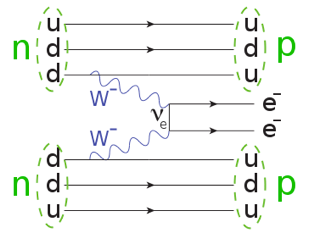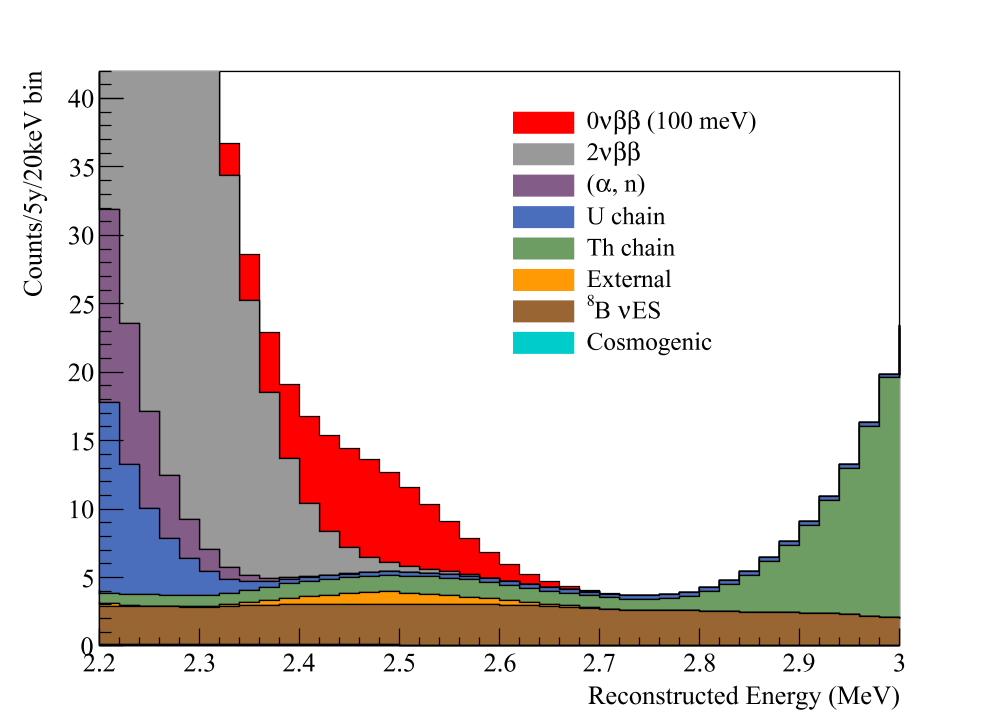Science Programme
The SNO+ Experiment is used to investigate a large suite of physics phenomena.
Find out more about our current active research interests here.
Neutrinoless Double Beta Decay
One of the most important open questions in physics is whether the neutrino is a Majorana fermion (as opposed to a Dirac fermion like other leptons). If so, the neutrino and anti-neutrino are identical particles. Many theories predict that neutrinos are Majorana particles, as this would allow for a mechanism that naturally explains the smallness of the neutrino mass.
The most promising way to discover Majorana neutrinos is through the detection of neutrinoless double beta decay (0νββ). The standard double beta decay process (2νββ) has been observed in a handful of nuclei, and occurs when a parent nucleus decays to a daugher nucleus via:

The 0νββ process is distinguished from 2νββ decays because it produces events at the endpoint of the decay energy spectrum. These are rare processes and detectors require large amounts of isotope to search for double beta decay.
The SNO+ experiment selected 130Te as its 0νββ isotope. 130Te was chosen because of its high natural abundance (34%), relatively high Q-value to avoid low energy radioactive backgrounds, and because it can be loaded into scintillator while maintaining excellent optical properties.
Assuming an mββ of 100 meV (which is around the level of the best current limit from KamLAND-Zen), the expected energy spectrum of the background and signal for SNO+ (after analysis cuts) is shown here:
